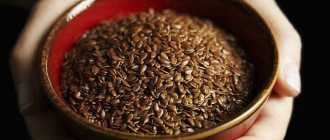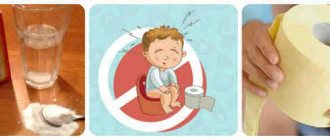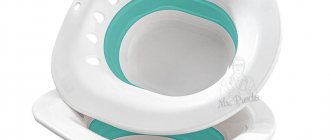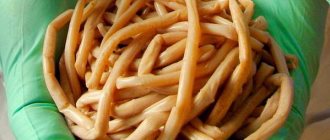Esophageal cancer is an oncological disease that occurs quite often; it ranks sixth in frequency of occurrence. In Russia, more than 7,000 newly diagnosed cases are diagnosed annually. The two most common types of cancer are squamous cell carcinoma, which affects the upper and middle parts of the organ. Adenocarcinoma also occurs in the lower part of the esophagus.
Other types are less common, accounting for only 10% of the total number of diseases. Most people suffering from esophageal cancer live in areas located north of Iran, in China, Japan, and other regions of Central Asia, and are found even in Siberia. This is due to the consumption of very spicy foods in these regions, including pickled foods.
It is believed that under the influence of various irritating factors, chronic inflammation of the esophagus occurs - esophagitis, then malignant neoplasms degenerate.
Why does cancer occur?
Esophageal cancer occurs in both young and old people.
Doctors consider risk factors for this disease:
- hereditary predisposition, if one of the parents suffered from esophageal cancer, the risk of the disease increases for children;
- smoking and alcohol abuse, especially if this occurs at a young age, with a fragile body. Those suffering from alcohol addiction get sick 10 times more often - strong drinks lead to chemical burns of the mucous membrane;
- errors in nutrition - eating too spicy, salty, pickled or fried foods;
- work in hazardous industries that use toxic gases;
- poor-quality drinking water containing heavy metals and other harmful impurities;
- chemical burn of the esophagus (alkali, acetic acid);
- bad air in the place of residence or work;
- male gender, the percentage of the disease in men in Russia is 10 times higher than in women, this is largely due to bad habits in men;
- age, most often a malignant tumor appears in people who are between 50 and 60 years old;
- drinking very cold or hot drinks, the drink should be at room temperature or not
- overweight, obesity. Scientists have conducted research and found that esophageal cancer is diagnosed in overweight patients twice as often as in people of normal weight;
- keratoderma (impaired keratinization of the skin);
- mechanical injuries when a solid body enters an organ or constantly ingests solid food.
The cause of cancer can be Barrett's disease - when a hernia occurs, stomach contents reflux into the esophagus, this can lead to Barrett's disease, which is considered a precancerous condition.
Also at risk are people suffering from esophageal achalasia, a neuromuscular disease that impairs the motility of the esophageal walls and the ability of the lower esophageal sphincter to relax when swallowing. Food stays in the esophagus for a long time, which leads to the development of severe pathology.
Cicatricial stricture is a narrowing of the esophagus. Often occurs after a chemical burn. Also as a consequence of a chronic disease in which cells degenerate into cancerous
For what diseases and conditions is soda used for a long time?
In medicine, we use soda quite often, especially for acid-base disorders and some other situations. But this is intravenous administration and a short period of time. However, soda is also used long-term in the form of powder and tablets.
Used in patients with chronic kidney disease for a long time, more than a year, 2 years and is of great benefit for the prevention of further deterioration of kidney function. Oddly enough, it is used, sometimes for quite a long time, by athletes. Increases the body's adaptation to high stress. Sometimes used for heartburn (reflux esophagitis) as part of combination drugs
Diagnostics
Signs of esophageal cancer in the first stages are not always alarming.
An accurate diagnosis is required to select the correct treatment for the disease. To exclude or identify an oncological disease, to establish how widespread the process is in the body, the doctor first examines the patient, listens to his complaints, and studies the dynamics of the disease.
Other studies are also needed:
- X-rays are taken with a contrast agent, which determines the condition of the lumen, whether there are ulcers and thickening in the walls of the esophagus.
- An esophagoscopy is performed using an endoscope to identify foci of a malignant tumor.
- Metastases are also detected by bronchoscopy; during this procedure, material is taken for histological examination.
- Computed tomography determines the size of the tumor, its spread to nearby organs and surrounding tissues, and lymph nodes.
- A blood test for tumor markers can detect a malignant neoplasm in cancer in the last stages - the third and fourth, and only in 40-45% of all patients. Therefore, this analysis is not always carried out.
Treatment in Turkey
Malignant tumors of the esophagus are very aggressive and difficult to treat. However, identifying them early guarantees complete relief in almost 90% of cases. But the second stage of esophageal cancer can be cured only in half of the patients, and the third - in 10%.
Going to Turkey for treatment at the Anadolu clinic will give you several advantages:
- quick diagnosis: making an accurate diagnosis takes 2-3 days;
- all specialists with extensive practical experience;
- the clinic treats cancer pathologies at all stages of development;
- the clinic’s equipment meets high international standards;
- our motto is an individual approach to each patient;
- the cost is lower than the prices for treatment in leading clinics in the USA, Europe and Israel;
- Treatment at the clinic is available to patients from abroad and CIS countries.
If you want to contact the Anadolu Clinic for treatment of esophageal cancer, you need to call us at 8 800 550 6891, or fill out the “Get a consultation” or “Request a call” form.
The material was prepared in agreement with medical doctors, Professor Sertach Yetisher and medical oncologist Sinan Karaaslan.
Preventive measures
Proper nutrition as a preventive measure for esophageal cancer.
Preventive measures include the following:
- It is important to constantly see a doctor for diseases such as barretta and ahalakhia.
- Watch your diet. It is harmful to eat excessively hot or cold food. Minimize the consumption of pickled foods and hot spices. A lack of vitamins can also affect the condition of the digestive organs, including the esophagus.
- Do not smoke or abuse alcoholic beverages.
- Drink purified water.
- Eat more vegetables and fruits, which are high in fiber.
- Treat your teeth in a timely manner, take care of your oral cavity - food should enter the esophagus well chewed.
Experimental data on the effectiveness of baking soda.
The study was published in 2009 in the renowned journal Cancer Research, the first to scientifically confirm the significance of the alkalizing effect of sodium bicarbonate on tumors.
Injecting a group of mice with a soda solution was able to confirm this effect. The results showed that baking soda actually increased pH and suppressed the formation of spontaneous metastases in mice with breast cancer. They also found that the increase in body pH occurs outside the cells, not in the cells. This is an important discovery, since it suggests that soda does not interfere with cellular metabolism, which means that soda will not compete with acids inside cancer cells and will not interfere with the activation of hyperlipid oxidation mechanisms and the formation of peroxides. Among these scientists is the name of Dr. Robert Gillis. In fact, sodium bihydrocarbonate (SBC) is a constant component of our blood plasma, 80% of the salts of which consist of bihydrocarbonate. Here it plays the role of a buffer mechanism maintaining homeostasis of blood pH, which fluctuates around 7.38. The rocker arm of this pendulum ranges from carbon dioxide to bihydrocarbonate, and automatic adjustment mechanisms, due to the transition of these substances into each other, maintain the stability of the axis of homeostasis - the constancy of blood pH. Therefore, there is no excess of BHA in the blood; any imbalance will be instantly adjusted. But we can talk about tension in one or another wing of the metabolic balance between acids and alkalis. The body activates mechanisms to compensate or eliminate any imbalance. This tension increases the Oxidation Reduction Potential (ORP) in the blood. Let me remind you that during a chemical reaction between a solution of soda and citric acid, electronic charges also appear. The greater the ORP, the more electrons there are in this environment and all processes are revived. This is similar to catalytic processes, where the catalytic capabilities of a charged medium are much stronger.
At the same time, let me remind you that according to our data, an increase in ORP used by itself in a number of cases increased the “sprouting effect” in tumor cells. The principle is this: the better the whole body is, the better it is for the tumors. But nevertheless, other data suggest that drinking soda still counteracts tumors, as experiments have shown. This means that the main factor in the beneficial effect of soda is not associated with an increase in ORP, but, most likely, with the appearance of excess carbon dioxide in the blood. Carbon dioxide, like other acids, easily enters the cell and their excess there causes sabotage actions to destroy these cells with peroxides.
A number of authors claim that the therapeutic effect is explained by an increase in the alkalinity of the environment around cancer cells and recall that cancer cells have an acidic environment around them. For my part, I believe that in reality the pH around the cells does not change much, but the dynamics of the rate of leaching and removal of toxic substances changes. It should be clarified that the acidity around cancer cells can be determined by both harmful and beneficial acids. Harmful acids are anaerobic exomediates, or, briefly, anaerobic exomediates - products of incomplete combustion. Harmful metabolic acids (excess lactic acid) displace useful ones that are necessary for treatment. They create a “swampy” stagnant external environment around themselves, that is, changing the ecology around them. In this swamp, immune cells and countersubstances capable of displacing “non-processing” cannot demonstrate their capabilities.
Some authors believe that by introducing sodium bicarbonate into the tumor microenvironment, it is possible to starve cancer cells, as well as stop their growth, division and spread.
The effect of bicarbonate on the antitumor immune system.
Previously, immune agents have been described that have shown promise for clinical activity, with patient response rates still only ranging from 11 to 27%. Conceivably, combination therapy may improve survival rates.
A group of mice were exposed to the alkalizing sodium bicarbonate. The scientists noted that while sodium bicarbonate alone did not reduce the growth of melanoma tumors in mice, it did increase the levels of T cells in the tumor.
Sodium bicarbonate's ability to increase T cell levels in tumors suggests that soda may work in combination with PD-1 and CTLA-4 inhibitors to further stimulate the immune system.
The researchers confirmed this by showing that treating mice with a baking soda solution and CTLA-4 or PD-1 inhibitors reduced the growth of melanoma and pancreatic tumors (compared to each substance alone). A promising immune therapy with T cells that are specifically active against a patient's tumor has shown significantly higher efficacy when combined with bicarbonate.
The acidic pH that occurs in the tumor microenvironment has significant immunosuppressive effects. By neutralizing this acid with a buffer (soda solution), scientists were able to improve the response of melanoma and pancreatic tumors to immunotherapy.
This work allows us to include tumor acidity in the list of immunosuppressive factors that are secreted by tumors. In the future, Moffitt researchers plan to initiate clinical trials to evaluate whether treatment with sodium bicarbonate (soda) can improve the effectiveness of anti-PD1 therapy in pancreatic cancer and melanoma. Source: H. Lee Moffitt Cancer Center and Research Institute
Dr. Mark Sircus explained the connection between cancer and pH, as well as the use of baking soda as anticancer agents in his book, Baking Soda - A Cancer Cure for Everyone, Rich and Poor. Dr. Sircus also recommends oral administration of baking soda. The oncologist recommended mixing baking soda with healthy energy sources such as honey.











